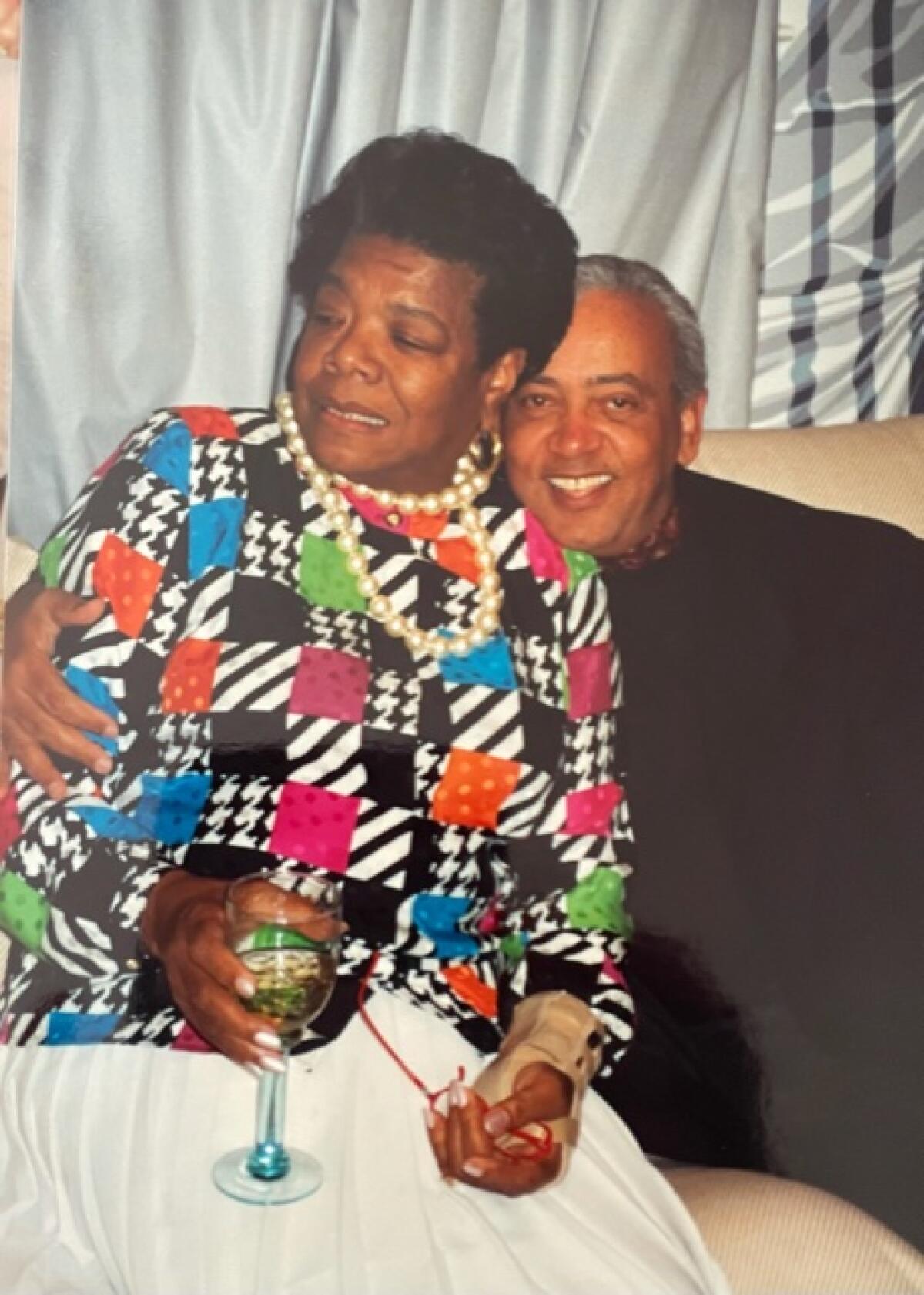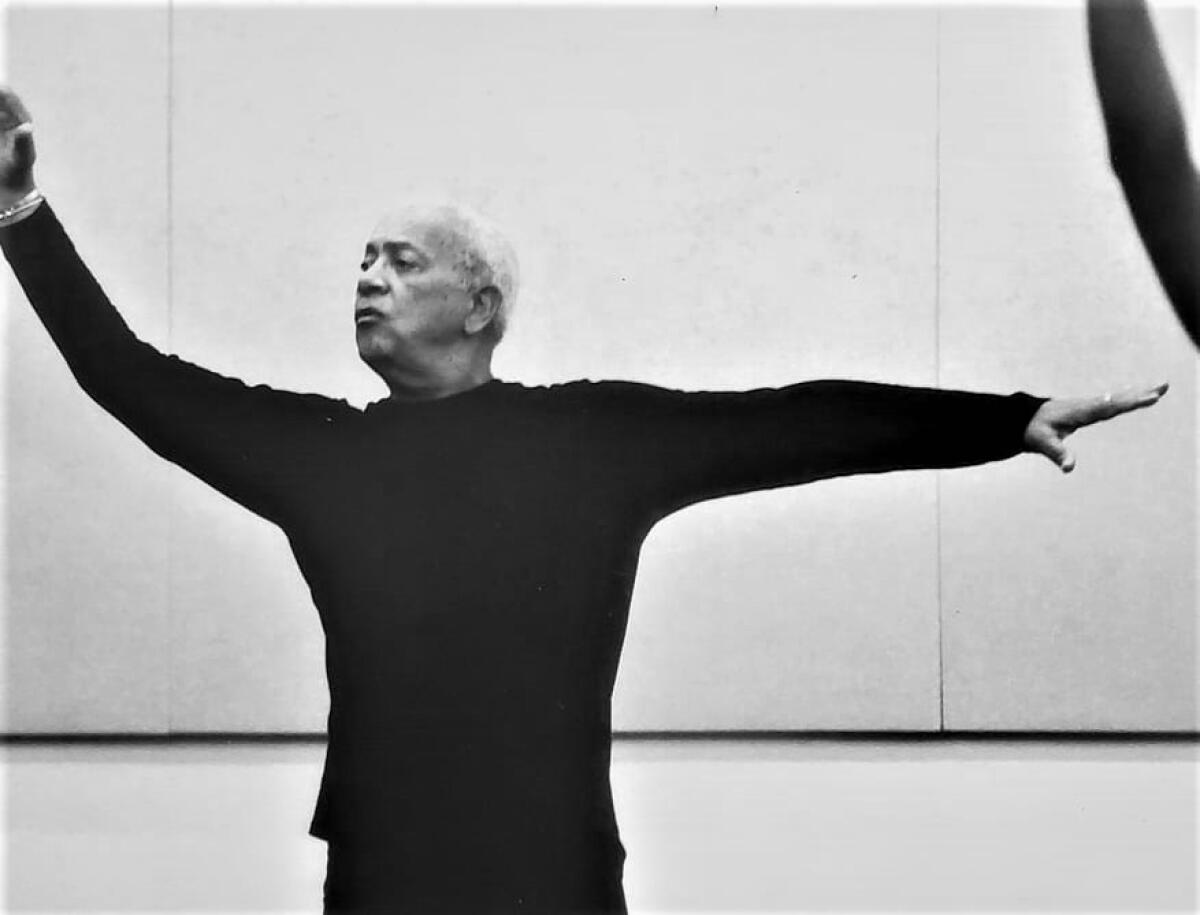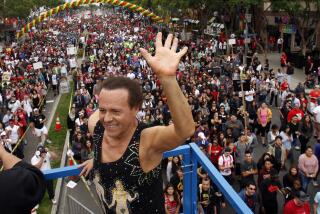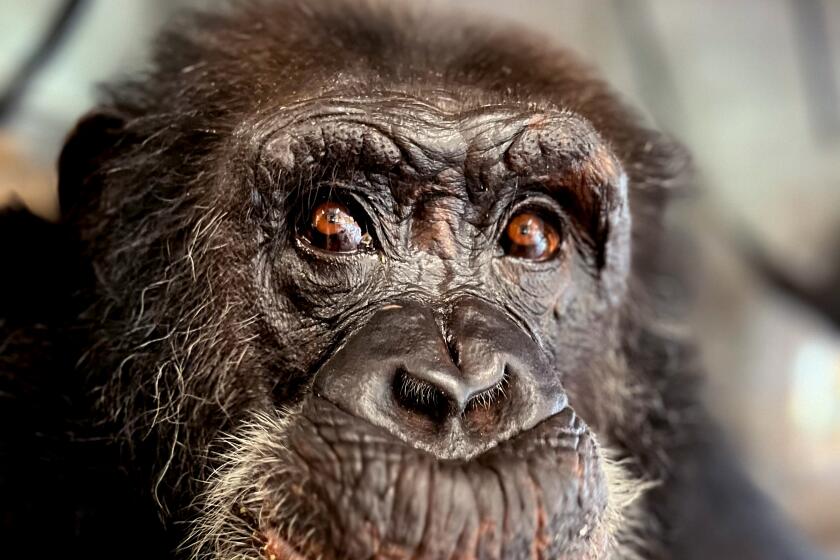Don Martin, dance teacher and keeper of Lester Horton’s legacy, dies at 90

Donald “Don” Martin, a choreographer and teacher who preserved the legacy of modern dance icon Lester Horton, died July 4 at his home in West Hollywood after suffering complications from lung disease. He was 90.
The death was confirmed by his cousin Dr. Vicki Hughes.
In the 1950s, Martin performed with the Lester Horton Dance Theater in L.A. and was an original member of Alvin Ailey’s American Dance Theater, performing in the company’s iconic 1960 piece “Revelations.” After working with the Library of Congress to archive Horton’s memorabilia, including choreographic notes, photographs and set designs, Martin taught Horton technique to generations of young dancers at the Los Angeles County High School for the Arts.
In 2003, he received the lifetime achievement award at the 12th annual Lester Horton Dance Awards, recognizing his work in preserving Horton technique and the choreographer’s legacy.
Born in Houston in 1931, Martin moved to L.A. as a child. He attended Thomas Jefferson High School in South L.A. with modern dance pioneers Alvin Ailey and Carmen de Lavallade, graduating in 1948. An afternoon trip with Ailey to observe De Lavallade taking a class at Horton’s Dance Theater in West Hollywood sparked Martin’s lifelong devotion to dance.
Martin began his career with Horton’s Dance Theater in the late 1940s. Horton founded the dance theater, one of America’s first permanent venues devoted to modern dance, in partnership with Bella Lewitzky. The troupe has been called the first integrated modern dance company in the U.S.
In addition to dancing, Martin was immersed in costume and set design, lighting and promotion, as well as teaching Horton technique to young students in L.A. In the early 1960s, he performed Horton’s “Dedication to Jose Clemente Orozco,” which was created in 1953.
Martin became friends with Maya Angelou when the author — then working as a performer — hired Horton dancers to open for her show supporting her album “Miss Calypso.” Traveling with Angelou, the performers had to use the “Green Book,” a guide listing safe spots for Black travelers.
“There were some times where they had to use the Black entrance,” said Natasha Diamond-Walker, a soloist for the Martha Graham Dance Company who was mentored by Martin. “They could not go to the white entrance or they could not eat at certain restaurants or they could eat at that restaurant but it had to be in the back outside.”
When Horton died unexpectedly in 1953, Martin worked with Frank Eng, Horton’s business manager, to keep the theater and school open. In 1960, Eng decided to close the dance theater, and Martin moved to New York to join the Alvin Ailey American Dance Theater; he performed with the company abroad as part of John F. Kennedy’s “President’s Special International Program for Cultural Presentations.”
After returning to L.A., Martin began working with Guy Greengard, owner of the luxury men’s clothing store Mr. Guy, a longtime fixture on Rodeo Drive in Beverly Hills. As a head fashion buyer for more than 20 years, Martin attended runway shows and styled Hollywood celebrities including Frank Sinatra and Steve McQueen.
“He was very fashionable. He loved Issey Miyake,” recalled Hughes. “He was just so well-rounded and cultured and classy, and all my friends loved him.”

Martin and Angelou remained close friends for 50 years. “Don would tell me about how [Angelou] would come over to his apartment, because he had a fabulous apartment in West Hollywood, and she fixed chicken and dumplings,” Hughes said.
Martin began teaching Horton technique at L.A. County High School for the Arts in the early 2000s.
At the school, where Martin taught until he was 85, he created original works and restaged Horton’s duet “Dedication to Jose Clemente Orozco” for students. Performing in one of Martin’s works was a rite of passage and a privilege for students, said Fiona Lummis Eddy, interim co-chair of the LACHSA dance department.
Diamond-Walker, one of Martin’s early LACHSA students, described his classes as demanding but fulfilling.
“He came from a minimalistic approach and he was all about the work,” Diamond-Walker said. “He wasn’t about emotions, like he didn’t really care how you were feeling that day — he himself didn’t bring any emotion into the room.”
That’s important, she added, because “as a professional dancer you can’t let your emotions dictate how you’re going to perform. He was giving all of his students that huge lesson and that sort of training that one would need when they’re a professional dancer.”

Diamond-Walker became Martin’s “dancing daughter” as her career progressed. After graduating college, she learned that Martin planned to entrust her with Horton’s collection, including rights to perform Horton’s choreography, props, paintings and stage maps, after his death. Martin had inherited Horton’s work and became a steward of the collection after Eng died.
“It’s a big responsibility and it’s a very detailed work because you have to make sure you’re doing it the right way, legally,” Diamond-Walker said. She plans to continue Martin’s work as a Horton custodian. “My plan now is to reinstate the Lester Horton Dance Theater and actually have the ballets of Horton and have the ballets of Don’s, all set and organized, so that they can be performed throughout the world.”
In 2020, Martin was diagnosed with stomach cancer. Even though chemotherapy led to complications and Martin grew weak, he maintained his elegance, Hughes said.
“He’s laying up in bed with the oxygen mask but it was just so peaceful and calm,” Hughes said, reflecting on his death. “His white drapes billowing on side of him. He’s got a huge poster of Marilyn Monroe above his bed, a pencil drawing of a naked dancer on one wall, and the other wall was all mirrored. It was like something out of a picture. There was an orchid plant on his bedside table. And he went out as gracefully as he came in to life.”
Martin is survived by six cousins plus nieces, nephews, great-nieces and great-nephews.
More to Read
The biggest entertainment stories
Get our big stories about Hollywood, film, television, music, arts, culture and more right in your inbox as soon as they publish.
You may occasionally receive promotional content from the Los Angeles Times.











